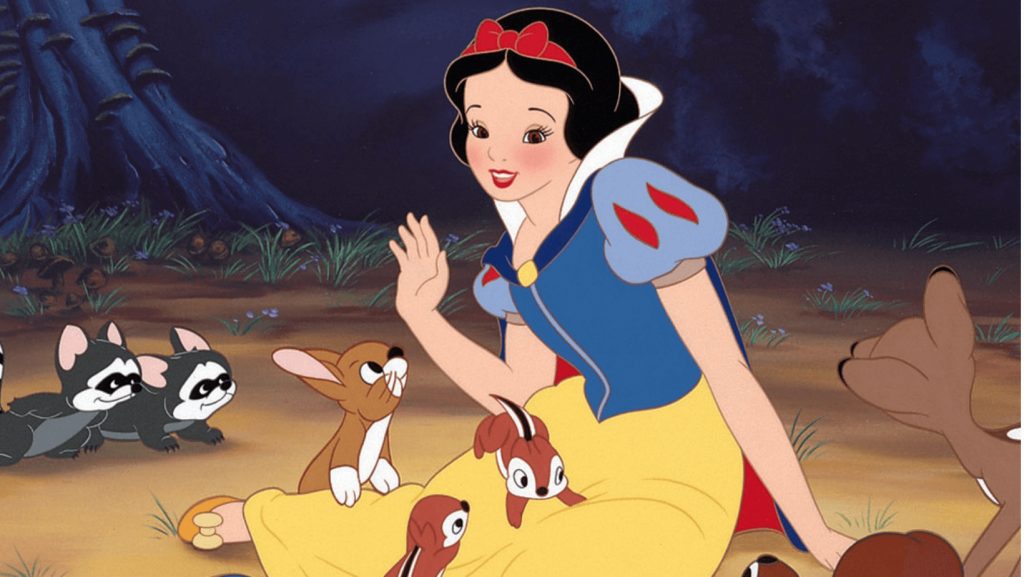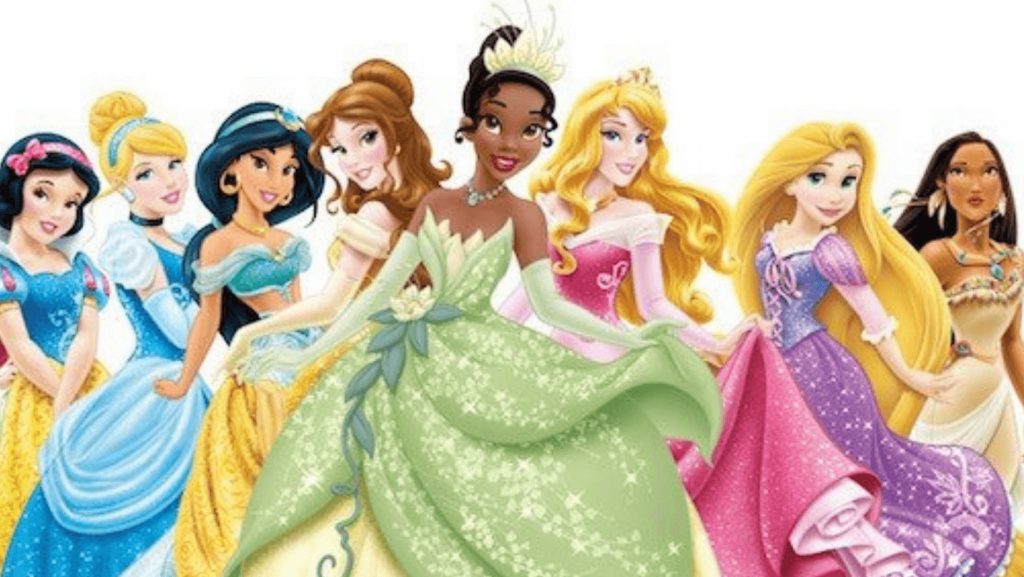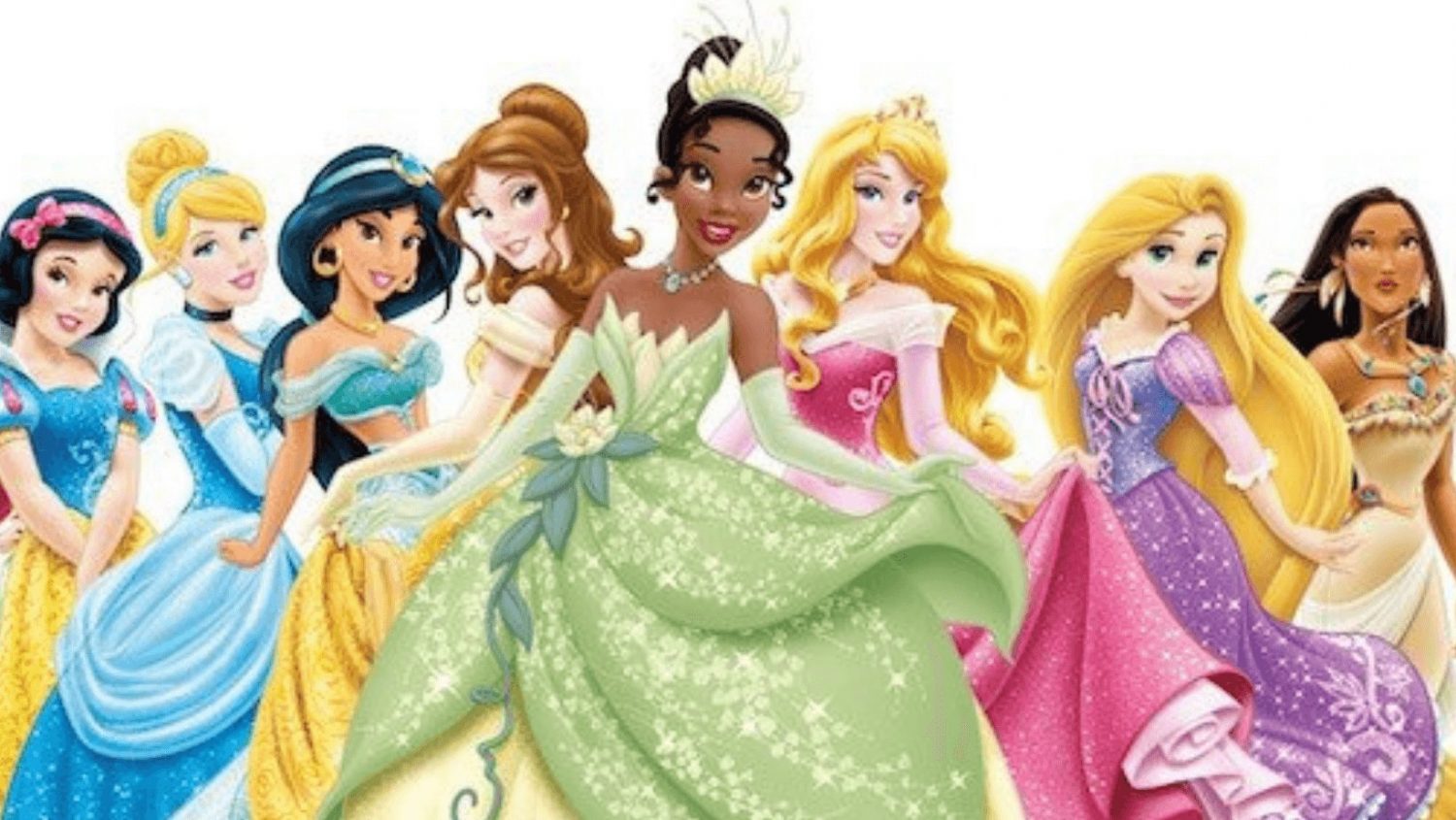
The Original Disney Princess
Let’s give a shout-out to the Disney princess who started it all, Snow White. On December 21, 1937, Snow White and the Seven Dwarfs premiered at the Carthay Circle Theatre in Los Angeles. Not only did this mark the debut of the first Disney princess, but it was also the first feature-length animated film in U.S. history. It was seen as a risky move at the time, and critics nicknamed the film “Walt Disney’s Folly,” since they were sure it would fail.
But the critics were quickly proven wrong. Snow White and the Seven Dwarfs became the highest-grossing film in history until it was surpassed by Gone With the Wind a year later. The profits from the movie were used to construct Disney Studios in Burbank, signaling a bright future for more Disney princesses to come. And in 1939, Walt Disney was presented with an honorary Academy Award for Snow White and the Seven Dwarfs. The award included one full-size Oscar, along with seven “dwarf” statuettes.
The impact of the first Disney princess has continued throughout the decades. In 1987, Snow White became the third fictional character to receive a star on the Hollywood Walk of Fame, following Mickey Mouse and Bugs Bunny. And in 1989, Snow White and the Seven Dwarfs became the first animated feature to be selected for the National Film Registry, recognized for being “culturally, historically or aesthetically significant.”

A Temporary Setback
The next Disney princess to make her debut was the titular character of the 1950 film, Cinderella. The original “Cinderella story” dates back to the 1st century B.C., but it had been more recently brought to the mainstream by the Brothers Grimm. Cinderella was said to be Walt Disney’s favorite princess. Ilene Woods, the voice of Cinderella, recalls Disney telling her, “You’re my favorite heroine, you know. There’s something about that story I associate with.”
And while Cinderella was a box office success, the next Disney princess wasn’t so lucky. Sleeping Beauty was released in theaters in 1959. It was an expensive, time-intensive production with opulent design work and complex technology. Walt Disney himself became disinterested in the film, instead focusing much of his time on Disneyland, which opened in 1955. Unfortunately, Sleeping Beauty had a disappointing performance at the box office. As a result, the studio didn’t produce another animated fairy tale until The Little Mermaid 30 years later.
The Little Mermaid had several hurdles to overcome before production was okayed. In addition to the underperformance of the last Disney princess film, a sequel to Splash was already in the works and studio executives worried that two mermaid films would be excessive. But luckily, they relented and gave The Little Mermaid the green light. The film introduced audiences to the fourth Disney princess, Ariel. Ariel’s facial features were modeled after actress Alyssa Milano, and she was given red hair to distinguish her from Daryl Hannah’s blonde mermaid in Splash. The Little Mermaid was both a box office and critical success, and it kicked off a period known as the “Disney Renaissance.”

Return Of The Disney Princess
Following the success of The Little Mermaid, Belle became the next member of the Disney princess lineup in the 1991 film Beauty and the Beast. This was another home run for the company. It became the first animated film to be nominated for the Academy Award for Best Picture, and the first Disney animated movie to cross the $100 million mark at the box office. According to screenwriter Linda Woolverton, Katharine Hepburn’s portrayal of Jo in Little Women was a big inspiration for Belle’s strong, aspirational character.
In the 30 years since Beauty and the Beast premiered, several other Disney princesses have joined the roster with unique stories of their own. The 1995 movie Pocahontas featured the first Disney princess based on a real historical figure. In the 2009 film The Princess and the Frog, Tiana claimed a number of firsts. Tiana was the first Disney princess to be shown with a paying job — in fact, she worked two jobs in the movie. She was also the first to be given dimples, a detail which was inspired by Tiana’s voice actress, Anika Noni Rose.
Disney hit a major milestone in 2010 when Tangled became the company’s 50th animated feature. The movie introduces us to Rapunzel, the first Disney princess whose film earned a PG rating. Mandy Moore voiced Rapunzel in the movie, and she had to beat out some stiff competition for the role. Broadway legend Idina Menzel also auditioned for the part, singing the song “Blackbird” by the Beatles. While she didn’t land the role in Tangled, the casting director was so impressed with her audition that she later approached Menzel about voicing Elsa in Frozen. Given the popularity of both Tangled and Frozen, it seems that the casting for the films worked out perfectly.
Pop Quiz
Fruit by the Foot
The Heartbreakers
(Australian) Cattle Dog

